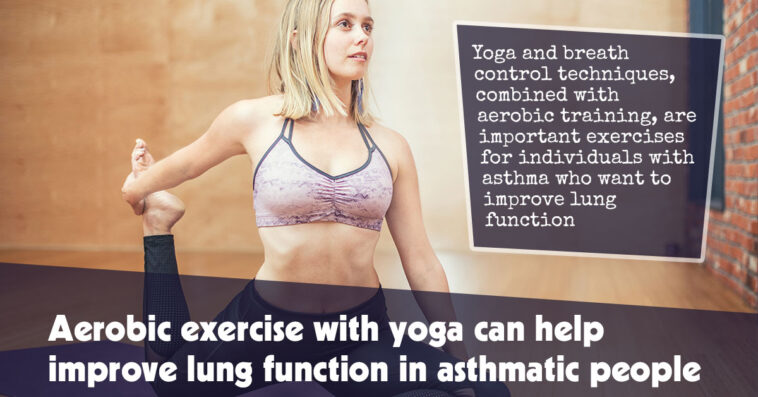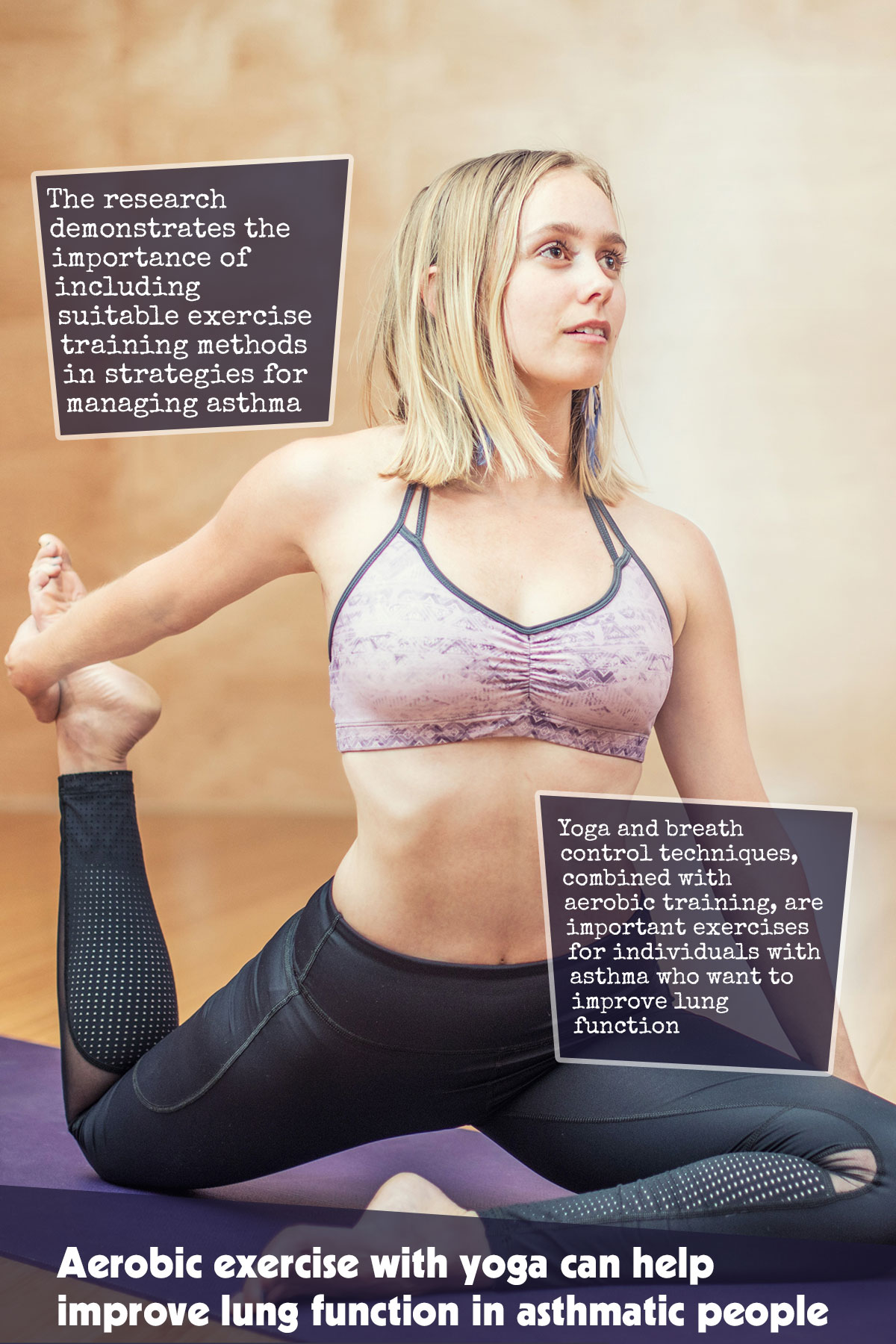A study has found that yoga and breath control techniques, combined with aerobic training, are significantly important exercises for individuals with asthma who want to improve lung function.1✅ JOURNAL REFERENCE
DOI: 10.1080/07853890.2023.2237031
The research demonstrates the importance of including suitable exercise training methods in strategies for managing asthma.
The results also show just how effective certain sorts of exercise can be for enhancing lung function in individuals who have asthma.
Breath training combined with yoga and aerobic training seems to be especially beneficial for providing additional options for effective treatment strategies.
Larger, randomized controlled studies are now necessary to better assess the benefits of exercise for people with asthma.
Asthma is a chronic lung disorder that impacts about 339 million individuals around the world. It can cause symptoms which include chest tightness, shortness of breath, wheezing, and coughing.
Exercise was previously considered a possible risk factor for people with asthma since it was thought to induce or aggravate acute asthma attacks. Other research has however shown that exercise can improve respiratory function as well as exercise capacity. Variations in some of the exercise treatments in existing studies have however made it difficult to compare the efficacy of various rehabilitation plans.
To look into this problem, the researchers carried out a meta-analysis, which allowed them to simultaneously compare the results from several studies in one analysis to assess the impact of various kinds of exercises on lung function in asthmatic individuals.
A total of 28 studies were included in the analysis that involved 2,155 asthmatic individuals, which looked at the impact of yoga training, relaxation training, aerobic training, breath training on lung function, as well as breath training in combination with aerobic training.
All 5 kinds of exercise treatments had greater efficacy in improving measurements of lung function in comparison to the control group who received conventional rehabilitation. The study found:
- Yoga training, relaxation training, aerobic training, breath training, and breathing combined with aerobic training, resulted in improvements in Forced Expiratory Volume levels and Peak Expiratory Flow.
- Yoga training, breath training, aerobic training, and breathing combined with aerobic training, improved Forced Vital Capacity levels.
- Yoga training, aerobic training, and breath training improved the Forced Expiratory Volume/Forced Vital Capacity ratio.
A statistical method was also applied to rank the impact of various exercise interventions against each other. The most significant impact on improving Forced Expiratory Volume levels was observed with relaxation training, breathing in combination with aerobic exercise had the most significant impact on improving levels of Forced Vital Capacity, and yoga training had the most significant impact on improving levels of Peak Expiratory Flow.
Certain study limitations could have affected the results such as inherent variability between the studies included in the review and inconsistencies in details of exercise frequency and intensity. Also, most individuals in the study were younger than 60 years old, so exercise interventions might produce different responses in older people.




